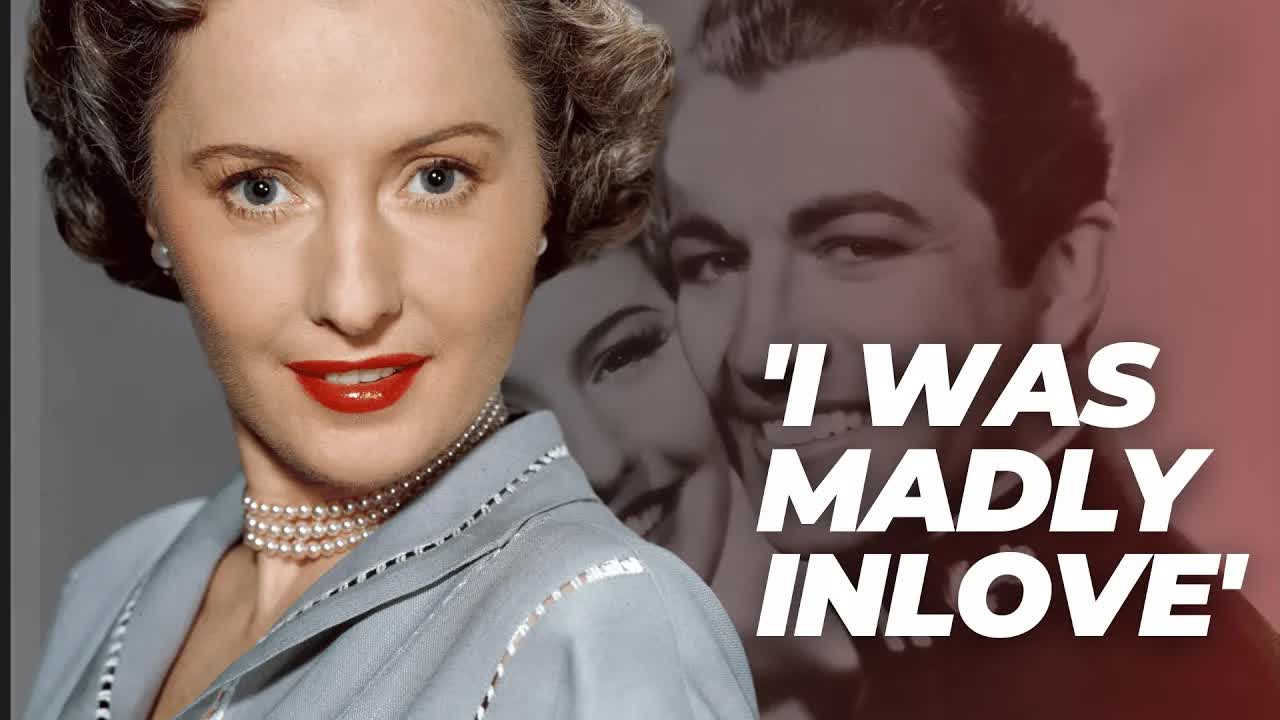In the glitzy realm of Hollywood, where love stories often take center stage, the romance between Barbara Stanwyck and Robert Taylor stands out as one for the ages.
Their relationship, marked by passion, challenges, and an enduring connection, reads like a classic film noir plot.
While many might say this was a second honeymoon for Stanwyck, she insists it was really the first, as circumstances had always kept them apart during their early years together.
Stanwyck’s journey to stardom began long before she met Taylor.
Born Ruby Catherine Stevens in 1907 in Brooklyn, New York, her childhood was fraught with hardship.
Orphaned at just four years old, she and her brother were raised by their older sister, which instilled in her a fierce resilience.
Her rise to fame began in the roaring twenties as a Ziegfeld girl, dazzling audiences on Broadway.
It wasn’t until she starred in Frank Capra’s 1930 film “Ladies of Leisure” that she truly made her mark in Hollywood, showcasing her raw talent and charisma.
As the 1930s unfolded, Stanwyck became a household name, known for her versatility across various genres.
Whether in melodramas, comedies, or the dark allure of film noir, she captivated audiences.
Her portrayal of Phyllis Dietrichson in “Double Indemnity” is still celebrated as one of the greatest performances in cinema history.
By the time she crossed paths with Robert Taylor, Stanwyck was not just an actress; she was a formidable force in the industry, commanding one of the highest salaries of her time.
Their love story began on the set of “His Brother’s Wife” in 1936, where Stanwyck, already an established star, took the younger Taylor under her wing.
Initially, their relationship was more of a mentor-mentee dynamic, but as they spent more time together, their bond blossomed into something deeper.
Living together in an era when such arrangements were scandalous only fueled the intrigue surrounding their relationship, leading to rampant speculation in the tabloids.
Despite her past marriage to Frank Fay leaving her cautious about commitment, Stanwyck found herself drawn to Taylor.
Their shared love for nature and down-to-earth personalities helped solidify their connection.
Taylor, with his striking looks, added to the allure of their romance, making them one of Hollywood’s most talked-about couples.
In 1939, amid mounting pressure from Metro-Goldwyn-Mayer due to an exposé on Hollywood’s unmarried couples, Stanwyck and Taylor tied the knot in a hasty ceremony in San Diego.
They eloped at midnight, avoiding the superstitious connotations of the number 13.
While the marriage was partly orchestrated by studio executives, it marked a significant turning point in their lives as they settled into married life, purchasing a ranch in Brentwood, Los Angeles.
However, the pressures of Hollywood soon began to take their toll.
Taylor enlisted in the Navy during World War II, creating a rift in their relationship as they faced long periods of separation.
Upon his return, the couple struggled to reconnect amidst the demands of their careers and the constant scrutiny of the public eye.
The façade of a happy marriage began to crack under the weight of reality.
Tensions escalated in 1950 when rumors of Taylor’s infidelity surfaced.
When Stanwyck confronted him about it, his admission that he wanted a divorce shattered her.
Their 12-year marriage came to an end in 1952, marking a painful chapter for both.
While they moved on to other relationships, neither remarried, indicating that their bond was far from ordinary.
Even after their separation, Stanwyck’s feelings for Taylor lingered.
In interviews, she often reflected on their time together with a blend of nostalgia and sorrow.
She spoke candidly about the difficulty of letting go, especially when someone chooses freedom over love.
This sentiment was especially poignant when she was invited to visit Taylor shortly before his death in 1969, a gesture that highlighted the respect between them.
At Taylor’s funeral, Stanwyck was seen weeping openly, a rare display of emotion for the usually composed actress.
Friends and colleagues noted that she frequently referred to Taylor as the love of her life, a title that remained unchanged despite the years and relationships that followed.
Even in her later years, she kept photographs of him, a testament to a love that endured beyond the confines of marriage.
The story of Barbara Stanwyck and Robert Taylor is not merely a tale of Hollywood glamour; it’s a narrative of love, loss, and the complexities of human relationships.
Their connection transcended the trials of fame and fortune, leaving an indelible mark on both their lives.
As we look back on their love story, it serves as a reminder that some bonds are simply unbreakable, lingering in the heart long after they’ve parted ways.































